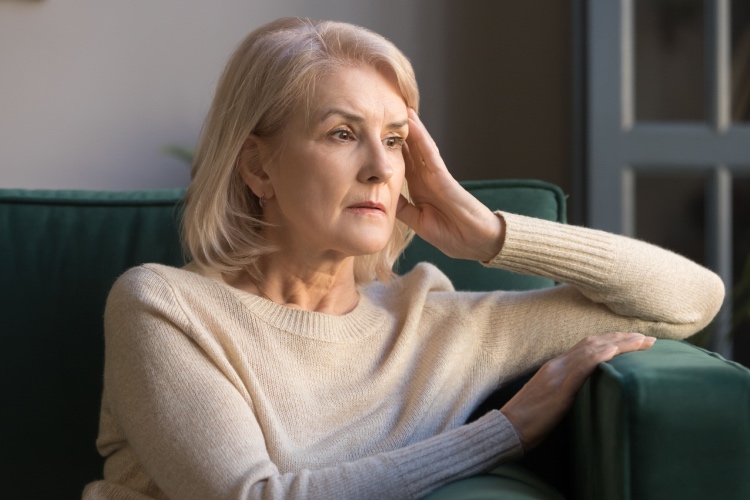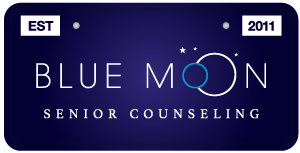
Living with agoraphobia can feel isolating, overwhelming, and even paralyzing at times. At Blue Moon Senior Counseling, we understand how daily life can be affected by this condition, especially for older adults. While therapy and support are essential to long-term recovery, there are also daily habits that can support your progress and help you feel more confident and secure.
Table of Contents
- What Is Agoraphobia?
- Create a Sense of Purpose in the Morning
- Use Breathing to Regulate Your Body’s Response
- Introduce Exposure Through Familiar Comfort Zones
- Build and Maintain Emotional Connection
- Use Writing to Externalize Fear and Track Growth
- Support Your Mental Health Through Physical Care
- When You’re Ready to Take the Next Step
- Frequently Asked Questions
What Is Agoraphobia?
Agoraphobia is an anxiety disorder that involves a strong fear of being in situations where escape might be difficult or help might not be available during a panic episode. This often includes places like open spaces, crowded areas, or unfamiliar settings. For older adults, agoraphobia can develop over time and may be linked to changes in health, mobility, or past stressful experiences. It’s a condition that can quietly limit daily life, but it’s also one that can be managed with the right support.
1. Create a Sense of Purpose in the Morning
Mornings set the tone for the entire day. For someone managing agoraphobia, a chaotic or aimless morning can make anxiety harder to manage. That’s why creating even a simple morning routine can offer stability.
You might wake up, open the window for fresh air, make a cup of tea, and sit in your favorite chair for ten minutes. That small sequence becomes a touchpoint. Over time, adding gentle activities like stretching, reading, or even making the bed can reinforce that you’re grounded in the present moment.
For seniors, especially those who live alone, this sense of structure can ease feelings of disorientation or helplessness. And because mornings are often when anxiety is highest, starting with intention gives you something steady to lean on.
2. Use Breathing to Regulate Your Body’s Response
It’s common for people with agoraphobia to feel physical symptoms of anxiety, a racing heart, dizziness, shortness of breath, even when they’re not in a threatening environment. These reactions are real, and they come from your nervous system doing its best to protect you.
Breathing exercises help you talk back to those signals.
But not all breathing techniques feel natural for everyone, especially if you’re unfamiliar with mindfulness practices. Try starting with a simple version of diaphragmatic breathing:
- Sit upright and place one hand on your stomach
- Inhale through your nose for four seconds, noticing your belly rise
- Exhale slowly through pursed lips for six seconds
- Rest for a moment, then repeat
Even two minutes of focused breathing can help slow your heartbeat and calm your mind. Practicing when you’re already calm can make this tool easier to access when you’re feeling panicked or overwhelmed.
Some may even find it helpful to pair breathing with music, soft lighting, or guided meditations, anything that adds a layer of calm. The more you practice, the more your body learns that it’s safe to soften.
3. Introduce Exposure Through Familiar Comfort Zones
Exposure therapy doesn’t always mean doing something that scares you right away. It’s more like building a bridge from where you are to where you want to be, using small, familiar steps along the way.
For example, if walking to the mailbox feels intimidating, begin by simply standing on your porch for two minutes while holding a phone call with a loved one. The familiarity of the voice helps counterbalance the discomfort of the environment.
You can also introduce mild exposure during positive moments:
- Sitting by a window with the blinds open
- Listening to nature sounds while imagining being in a park
- Watching a video of a familiar neighborhood or store
These actions may seem small, but they engage your senses in a way that gradually builds tolerance to external spaces. You’re not pushing yourself too far too fast, you’re expanding your comfort zone gently.
Keeping a log of these moments, even just a quick note like “stood on porch for 3 minutes today,” can reinforce the progress you’re making.
4. Build and Maintain Emotional Connection
Agoraphobia is isolating by nature. When the idea of going out becomes stressful, friendships and social habits can fall away, and with them, the support that makes healing easier.
But staying connected doesn’t require big social plans. Instead, it can be about nurturing one or two relationships that offer regular, low-pressure check-ins. A weekly phone call with a grandchild, a recurring Zoom session with a support group, or even exchanging texts with a friend can help ease emotional isolation.
Here’s something we often suggest: create a simple “connection calendar” where you mark down who you’d like to reach out to and when. This adds structure without pressure, and it gives you something social to look forward to.
Emotional connection does more than reduce loneliness; it also reminds your brain that people are safe, interactions are rewarding, and life beyond four walls is still reachable.
If social anxiety overlaps with your agoraphobia, working with a therapist to role-play conversations or rebuild confidence can be a helpful step.
5. Use Writing to Externalize Fear and Track Growth
Anxiety thrives in silence. The thoughts that spiral in your mind can become more manageable when you bring them out onto paper.
Journaling is more than writing about your day, it’s a practice of naming your thoughts, seeing your emotions clearly, and building patterns of understanding. Some people feel relief after simply jotting down how scared they felt in the morning, while others use their journal to identify triggers over time.
Here are a few writing prompts that work well for managing agoraphobia:
- What moment today felt difficult? What helped you get through it?
- What was something you did today that you weren’t able to do last month?
- What do you wish others understood about your experience?
You can use a regular notebook or even a note app on your phone. There’s no right or wrong way, what matters is the process. You might also use journaling as a way to communicate with your therapist between sessions.
6. Support Your Mental Health Through Physical Care
When agoraphobia takes hold, it’s easy to overlook basic physical needs. But what happens in the body often influences what happens in the mind. Fatigue, dehydration, blood sugar dips, or disrupted sleep can all make anxiety worse, even if they’re not the root cause. This is why tending to your physical health is a daily habit that directly supports mental wellness.
For many seniors, this doesn’t mean starting an intense exercise program or following a strict diet. It often starts with listening to your body and responding with consistency:
- Drink a full glass of water first thing in the morning
- Aim to eat meals at regular times each day, with proteins and fiber to stabilize energy
- Limit caffeine, especially in the afternoon, if it heightens anxiety
- Move in gentle ways, walking around your home, stretching in a chair, or doing light household tasks
- Create a relaxing bedtime routine to improve sleep
If mobility is limited, even basic movement like shoulder rolls, leg lifts, or guided chair exercises can increase circulation and reduce feelings of restlessness or tension.
Tending to your body reminds your brain that you’re safe. That you are, in fact, in control. These small acts of physical care add up, and they make it easier to face the emotional work of recovery.
Blue Moon Is Here To Take the Next Step
There’s no perfect timeline for healing from agoraphobia. For some, the goal is to walk to the mailbox without fear. For others, it’s rejoining a weekly social group or visiting family again. Whatever your goals are, they’re valid. And you don’t have to reach them alone.
At Blue Moon Senior Counseling, we specialize in helping older adults manage anxiety, isolation, and fear-based conditions like agoraphobia. If you’re ready to take the next step, even a small one, we’re here for you. Call us today at 630-896-7160 or contact us here.
Frequently Asked Questions
- What is agoraphobia?
Agoraphobia is an anxiety disorder that causes people to avoid certain places or situations due to fear they won’t be able to escape or get help during a panic episode. This can include being in open spaces, crowds, public transportation, or even leaving home.
- Can agoraphobia develop later in life?
Yes. While agoraphobia often starts in early adulthood, it can develop at any age, especially after health scares, traumatic experiences, or increased mobility limitations. Many seniors begin experiencing symptoms later in life.
- How can therapy help with agoraphobia?
Therapy helps by identifying the root causes of fear, changing how you respond to anxious thoughts, and developing strategies to safely increase your independence. Cognitive behavioral therapy (CBT) is one of the most effective approaches, but support from a therapist who understands seniors’ needs makes a big difference.
- Do I have to leave my house to start therapy?
No. Blue Moon Senior Counseling offers teletherapy services, so you can receive care from home. This is especially helpful for people whose agoraphobia prevents them from traveling or being in unfamiliar settings.
- What if I’m not ready to make big changes?
That’s okay. Therapy doesn’t require big leaps. We start with where you are now and work at a pace that feels safe. Even showing up for a conversation is a powerful step forward.
